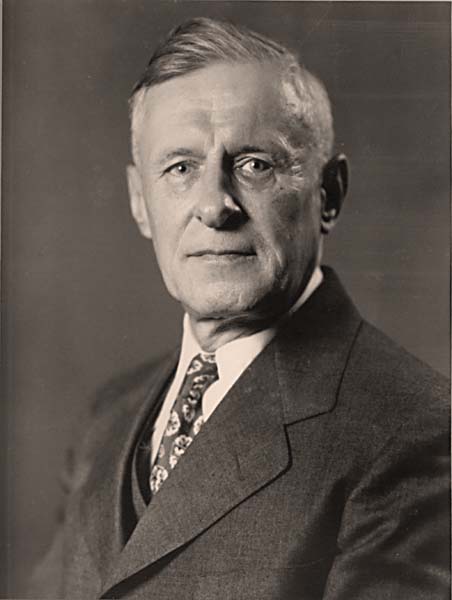William F. Meggers

William F. Meggers was born July 13, 1888 on a farm in Wisconsin. He attended Ripon College, receiving a bachelor's degree in 1910. He spent the following year as a graduate assistant. Meggers moved on to the University of Wisconsin but, needing a better paying job, became a physics instructor at the then recently founded Carnegie Institute of Technology in Pittsburgh, Pennsylvania.
After reading Niels Bohr’s paper "On the Constitution of Atoms and Molecules," during his second year at Carnegie, Meggers decided to become a spectroscopist. Shortly thereafter in 1914, Meggers received an appointment as laboratory assistant to Kelvin Burns, who was at the time the sole spectroscopist at the National Bureau of Standards (NBS), Washington, D.C. Meggers would stay at NBS for more than half a century advancing the disciplines of spectroscopy, photography, and atomic physics. He officially retired in 1958 as chief of the Spectroscopy Section but continued working until shortly before his death.
During World War I, Meggers continued his spectroscopic work at NBS and earned a Ph.D. from Johns Hopkins University in 1917. Some of his important projects covered the measuring of standard wavelengths with interferometers, photographing spectra beyond visible red, demonstration of the use of red-sensitized emulsions for photography from airplanes, and other pioneer spectrochemical analyses, measuring many indexes of refraction of the atmosphere.
As an active member of the International Astronomical Union's Commission on Standard wavelengths, Meggers was the main contributor to secondary standards of wavelength from an iron arc measured relative to the primary standard (red radiation from cadmium). He provided an improved primary standard (Meggers Mercury 198 Lamp) and superior secondary standards emitted by an electrodeless lamp containing thorium iodide.
Meggers pioneered new techniques in spectrochemistry. A paper on "Practical Spectrographic Analysis" published in 1922 is generally credited with reviving interest in chemical spectroscopy. He spent much of his career improving not only standard wavelengths but also descriptions of atomic and ionic spectra. His work led to the calibration of intensity and spectral number as well as the energy levels responsible for each spectral line.
Meggers was honored for his many accomplishments over his lifetime. Among those honors: OSA’s Frederic Ives Medal and C.E.K. Mees Medal, the U. S. Department of Commerce’s Exceptional Service Gold Medal, the Franklin Institute’s Eliot Cresson Medal, and membership in the National Academy of Science. OSA created the William F. Meggers Award to recognize outstanding work in spectroscopy.
William F. Meggers died 19 November 1966.
Document Created: 26 Jul 2023
Last Updated: 28 Aug 2023
